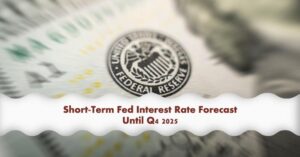In this article, we will discuss banking crises. In today's world, the economy is heavily dependent on the banking system. Banks are essential institutions that provide credit, manage savings, and promote investments. However, just like any other sector, the banking industry is prone to crises that can have devastating consequences on individuals, businesses, and the economy as a whole.
In this article, we will explore what a banking crisis is, its causes, types, and effects. We hope that by the end of this article, you will have a better understanding of this critical issue and its impact on the financial world. The recent banking crises in the last year have caused a lot of concern and anxiety for people around the world.
Bank Failures in the US
Overview: Five banks collapsed in the US in 2023, marking a significant increase from the previous two years which saw no failures.
Details of Failed Banks:
- Silvergate Bank: This cryptocurrency-focused bank failed on March 8th due to losses in its loan portfolio.
- Silicon Valley Bank: This well-known regional bank experienced a bank run and was seized by regulators on March 10th.
- Citizens Bank: This small bank was acquired by Iowa Trust & Savings Bank on November 3, 2023.
- Heartland Tri-State Bank: This small bank was acquired by Dream First Bank, National Association on July 28th.
- First Republic Bank: This larger bank was acquired by JPMorgan Chase Bank, National Association on May 1st.
While the number of failures remains relatively low compared to historical periods like the 2008 financial crisis, the concentrated nature of these collapses in 2023 had a significant impact on the banking industry and raised concerns about potential wider economic ramifications.
ALSO READ: List of Failed Banks in the United States
The banking industry plays a crucial role in the global economy, providing credit, managing savings, and promoting investment. However, like any sector, the banking industry can experience crises that have far-reaching consequences for individuals, businesses, and the economy as a whole. The collapse of these banks has created a lot of uncertainty about whether the banking crisis can be contained.
Causes of Banking Crises
Banking crises occur when the financial sector fails to function efficiently, leading to the collapse of one or more financial institutions. There are various causes of banking crises, including economic, political, and financial factors.
One of the most common causes of banking crises is excessive risk-taking by financial institutions. This can occur when banks engage in risky lending practices or investments without adequate risk management measures in place. In such cases, banks may become overexposed to certain sectors, leading to a sudden loss of confidence by investors, depositors, and other stakeholders.
Another factor that can lead to banking crises is the presence of a large number of non-performing loans (NPLs). When borrowers default on their loans, it can lead to a significant increase in NPLs, which can adversely affect the financial stability of banks. This can cause a ripple effect across the economy, leading to a decline in economic activity and an increase in unemployment.
Moreover, banking crises can also be caused by macroeconomic factors, such as recessions, high inflation, or currency devaluations. These factors can negatively impact the financial health of banks, leading to a decline in their profitability and a subsequent loss of investor confidence.
Finally, regulatory and supervisory failures can also contribute to banking crises. Weak regulations, inadequate oversight, and a lack of enforcement can encourage risky behavior by banks and allow them to engage in fraudulent activities that can lead to their collapse.
In summary, banking crises are complex events that can result from various factors, including excessive risk-taking, non-performing loans, macroeconomic factors, and regulatory failures. As such, it is essential for policymakers and financial institutions to take measures to prevent or mitigate these crises, such as improving risk management practices, strengthening regulations, and enhancing supervisory mechanisms.
Types of Banking Crises
Banking crises can take different forms depending on the underlying causes, severity, and duration of the crisis. Here are some common types of banking crises:
Credit or loan quality crisis: This type of crisis occurs when banks experience high levels of default or non-payment of loans, resulting in significant losses and liquidity problems. This can happen when banks lend too much to risky borrowers, such as subprime borrowers, or when they have poor credit risk management practices.
Liquidity crisis: This type of crisis occurs when banks face a shortage of cash or liquid assets to meet their obligations, such as deposit withdrawals or maturing debt. This can happen when banks have relied too heavily on short-term funding or when they have invested in illiquid assets.
Solvency crisis: This type of crisis occurs when banks have negative equity, meaning that their liabilities exceed their assets, making it difficult for them to continue operating. This can happen when banks suffer significant losses on their investments or loans, and their capital buffers are insufficient to absorb the losses.
Systemic crisis: This type of crisis occurs when the banking system as a whole is under stress, leading to a widespread loss of confidence, bank runs, and contagion effects that can spread to other sectors of the economy. This can happen when multiple banks are facing similar problems, such as a housing market crash or a global financial crisis.
Understanding the different types of banking crises can help policymakers and regulators design appropriate interventions to prevent or mitigate their impact. For example, during a credit crisis, regulators may need to tighten lending standards and enforce more stringent risk management practices. During a liquidity crisis, central banks may need to provide emergency funding to banks to prevent a systemic crisis.
5 Warning Signs of Banking Crises
Banking crises can have severe consequences on individuals, businesses, and the economy as a whole. It is important to understand the warning signs that can lead to such crises in order to prevent them from happening. Here are some common warning signs:
- High levels of debt: When banks lend too much money, it can lead to an increase in debt levels that becomes unsustainable. This can cause borrowers to default on their loans, which can lead to losses for the banks.
- Asset bubbles: When asset prices, such as real estate or stocks, rise rapidly and unsustainably, it can lead to a bubble. If the bubble bursts, it can cause significant losses for banks that have invested heavily in those assets.
- Poor risk management: Banks that take on too much risk without adequate risk management procedures in place can put themselves in a vulnerable position. This can include not properly assessing the creditworthiness of borrowers or investing in risky assets.
- Economic imbalances: If there are large economic imbalances, such as trade deficits or inflation, it can lead to a banking crisis. This can happen if banks have lent heavily to one sector of the economy that experiences a sudden downturn.
- Political instability: Banks can be affected by political instability or conflicts, such as changes in government policies or social unrest. This can lead to a loss of confidence in the banking system and a run on the banks.
It is important for regulators and policymakers to be vigilant in monitoring these warning signs and taking action to prevent banking crises from occurring. This can include implementing regulations and oversight measures to ensure that banks are operating in a safe and sound manner. Additionally, banks themselves can take steps to mitigate risks and ensure that they are adequately capitalized to weather any potential crises.
What Are the Effects of Banking Crises?
Banking crises can have severe consequences. The effects of banking crises can be far-reaching and long-lasting, impacting individuals, businesses, and the economy as a whole. It is crucial to monitor and address the warning signs of banking crises to prevent them from occurring and minimize their impact. Here are some of the potential effects:
On Individuals:
- Loss of savings: Bank failures can lead to the loss of personal savings, leaving individuals in a difficult financial situation.
- Unemployment: When banks fail, it can lead to the closure of businesses and the loss of jobs, which can have a significant impact on individuals and their families.
- Reduced access to credit: During a banking crisis, credit can become scarce, making it harder for individuals to obtain loans for things like purchasing a home or starting a business.
On Businesses:
- Limited access to credit: During a banking crisis, banks may reduce lending, which can limit businesses' access to credit and hinder their ability to operate and grow.
- Loss of investments: When banks fail, businesses can lose their investments, leading to significant financial losses.
- Closures: Banking crises can lead to the closure of businesses, particularly those that rely on credit to operate.
On the Economy:
- Reduced economic growth: When banks fail, it can lead to reduced economic growth as businesses struggle to obtain credit and individuals lose savings and jobs.
- Market instability: Banking crises can lead to market instability, causing investors to lose confidence and potentially leading to a wider economic recession.
- Government intervention: During a banking crisis, governments may need to intervene to stabilize the financial system, which can have significant costs to taxpayers.
Government Responses to Banking Crises
When a banking crisis occurs, it often requires government intervention to stabilize the financial system and prevent further economic damage. The appropriate response depends on the nature and severity of the crisis, as well as the government's fiscal and monetary policy tools.
One of the most common responses is for the government to provide financial support to failing banks through loans or direct capital injections, which can help maintain confidence in the banking system and prevent panic withdrawals. In some cases, governments may also opt to temporarily nationalize banks to ensure their continued operation and prevent their collapse.
Another potential response is to increase regulatory oversight of the banking industry. This can include stricter capital requirements, enhanced risk management procedures, and more robust stress testing to identify potential weaknesses in the system before they become critical.
Monetary policy is also a tool that can be used to address banking crises. Central banks can cut interest rates to lower the cost of borrowing and stimulate economic activity, or use other measures such as quantitative easing to inject liquidity into the financial system.
In addition to these measures, governments may also take broader steps to stabilize the economy as a whole, such as fiscal stimulus packages or structural reforms to address underlying economic weaknesses. Overall, the appropriate government response to a banking crisis will depend on a variety of factors and requires careful consideration of the most effective and sustainable course of action.
Lessons Learned from Past Banking Crises
Banking crises have occurred throughout history, and each one offers valuable lessons for preventing and managing future crises. One lesson learned is the importance of adequate regulation and oversight of the banking industry to prevent reckless lending and investing practices that can lead to a crisis. Another lesson is the need for transparency and accountability in the banking industry to ensure that banks are held accountable for their actions and that customers are informed of any risks associated with their investments.
Moreover, it is essential to establish effective crisis management strategies to mitigate the impact of a banking crisis. Governments and financial institutions must work together to implement measures that can stabilize the banking system, protect depositors' savings, and maintain confidence in the financial system.
In addition, it is crucial to recognize that a banking crisis is not just a financial problem but can have significant social and economic consequences. Individuals can lose their savings, businesses can go bankrupt, and unemployment can rise, causing social unrest and economic instability. Therefore, it is essential to address the root causes of a banking crisis and implement measures to mitigate its impact on individuals, businesses, and the economy.
Role of Central Banks in Preventing and Managing Banking Crises
Central banks play a crucial role in preventing and managing banking crises. They are responsible for maintaining financial stability by implementing monetary policies, regulating banks, and providing emergency liquidity to the banking sector when necessary.
One of the primary tools central banks use to prevent banking crises is setting interest rates. By raising interest rates, central banks can discourage excessive borrowing and lending, which can lead to bubbles and over-investment in certain sectors. Lowering interest rates, on the other hand, can stimulate economic growth and encourage investment.
Central banks also regulate banks by setting prudential standards and conducting regular stress tests to assess the resilience of the banking system. This helps to identify weaknesses in the banking system before they escalate into a crisis.
In the event of a banking crisis, central banks can provide emergency liquidity to banks to prevent a run on deposits and a collapse of the banking system. Central banks can also provide loans to troubled banks and purchase distressed assets to stabilize financial markets.
However, central banks must also strike a delicate balance between providing emergency liquidity and preventing moral hazard, which is the idea that banks will take on excessive risk if they believe they will be bailed out by the central bank. To prevent moral hazard, central banks must carefully design their emergency lending facilities to discourage risky behavior by banks.
Here are some examples of actions the Federal Reserve has taken in the past to prevent and manage banking crises:
- Lending to Troubled Banks: During the 2008 financial crisis, the Fed created several lending facilities to provide loans to banks that were struggling to meet their obligations. For example, the Term Auction Facility (TAF) provided short-term loans to banks in exchange for collateral, while the Term Asset-Backed Securities Loan Facility (TALF) provided loans to holders of asset-backed securities. These facilities helped to restore confidence in the banking sector and prevent a widespread collapse of the financial system. The TAF was introduced in December 2007, and the terms of the loans were initially set at 28 days, although the Fed later extended the maximum term to 84 days in response to continued strains in financial markets. The TAF was one of the Fed's many responses to the global financial crisis of 2007-2008, and it was designed to provide a new source of liquidity to banks that were experiencing difficulty obtaining short-term funding in the interbank lending market.
- Quantitative Easing: In response to the 2008 financial crisis, the Fed implemented a series of quantitative easing (QE) programs, in which it purchased large amounts of Treasury bonds and mortgage-backed securities. This increased the supply of money in the economy, lowering interest rates and spurring economic growth. By supporting the overall economy, the Fed aimed to prevent further bank failures and stabilize the financial system.
- Regulatory Oversight: The Fed also plays a critical role in overseeing the banking industry and promoting financial stability. It regularly conducts stress tests on large banks to ensure they have adequate capital and can withstand economic shocks. Additionally, the Fed has the authority to take enforcement actions against banks that engage in risky or fraudulent behavior, such as fines or sanctions.
Overall, the Federal Reserve has a range of tools at its disposal to prevent and manage banking crises. By acting as a lender of last resort, implementing monetary policy, and providing regulatory oversight, the Fed aims to promote financial stability and prevent the kinds of crises that can have far-reaching effects on individuals, businesses, and the economy as a whole.
Preventive Measures to Avoid Banking Crises
Preventive measures are essential to avoid the occurrence of banking crises. Here are some measures that can help in preventing banking crises:
- Strengthening Regulations and Supervision: One of the most effective ways to prevent banking crises is to have strong regulations and supervision. Regulators need to keep a close eye on the activities of banks and ensure that they comply with the established rules and regulations. This includes setting minimum capital requirements, enforcing risk management practices, and conducting stress tests to identify vulnerabilities.
- Promoting Sound Risk Management Practices: Banks must implement sound risk management practices to avoid excessive risk-taking, which can lead to financial losses. This includes ensuring that loans are made to creditworthy borrowers, diversifying the loan portfolio, and conducting regular assessments of the creditworthiness of borrowers.
- Encouraging Transparency and Disclosure: Transparency and disclosure are critical to preventing banking crises. Banks must provide accurate and timely information to stakeholders about their financial condition, risk management practices, and exposure to risks.
- Fostering a Culture of Ethical Conduct: A culture of ethical conduct is necessary to prevent banking crises. Banks must promote ethical behavior and discourage unethical conduct that could undermine the stability of the financial system.
According to the International Monetary Fund (IMF), preventive measures are essential to avoid the occurrence of banking crises. The IMF recommends implementing a comprehensive framework of financial regulation and supervision to promote the stability of the banking sector. This framework should include requirements for adequate capital and liquidity levels, effective risk management practices, and mechanisms for resolving failed banks.
The IMF also stresses the importance of macroeconomic stability and policies that promote sustainable economic growth as a means of reducing the likelihood of banking crises. By taking these measures, policymakers can help prevent the occurrence of banking crises and mitigate their potential impact on individuals, businesses, and the broader economy.
FAQs on Banking Crises
References:
- https://www.worldbank.org/en/publication/gfdr/gfdr-2016/background/banking-crisis
- https://www.reuters.com/markets/us/biden-says-banking-crisis-has-calmed-down-2023-03-17/
- https://www.federalreserve.gov/regreform/reform-taf.htm
- https://www.imf.org/external/pubs/nft/op/224/
- https://www.federalreserve.gov/newsevents/speech/kohn20100513a.htm
- https://www.npr.org/2023/03/21/1164263563/silicon-valley-credit-suisse-bank-collapse
- https://www.forex.com/en/market-analysis/latest-research/everything-you-need-to-know-about-the-2023-banking-crisis/










